
Whew no more typewriting for me!
Still I have a soft spot for the cover created by Ernst Deutsch who in 1919 —after leaving Berlin following a plagiarism scandal— started using the pseudonym Dryden. The sheet music cover is for the waltz Mercedes Mädel (Mercedes Girls) composed for the German company Mercedes Buro Maschinen. On the cover these Buro Maschinen are not prominently shown, they are only suggested on the lower background. Deutsch-Dryden used the exact same table and chair on an earlier publicity for the Mercedes Model 3 typewriter. On this poster the seductive secretary is not waltzing with her colleague: she is hard at work.
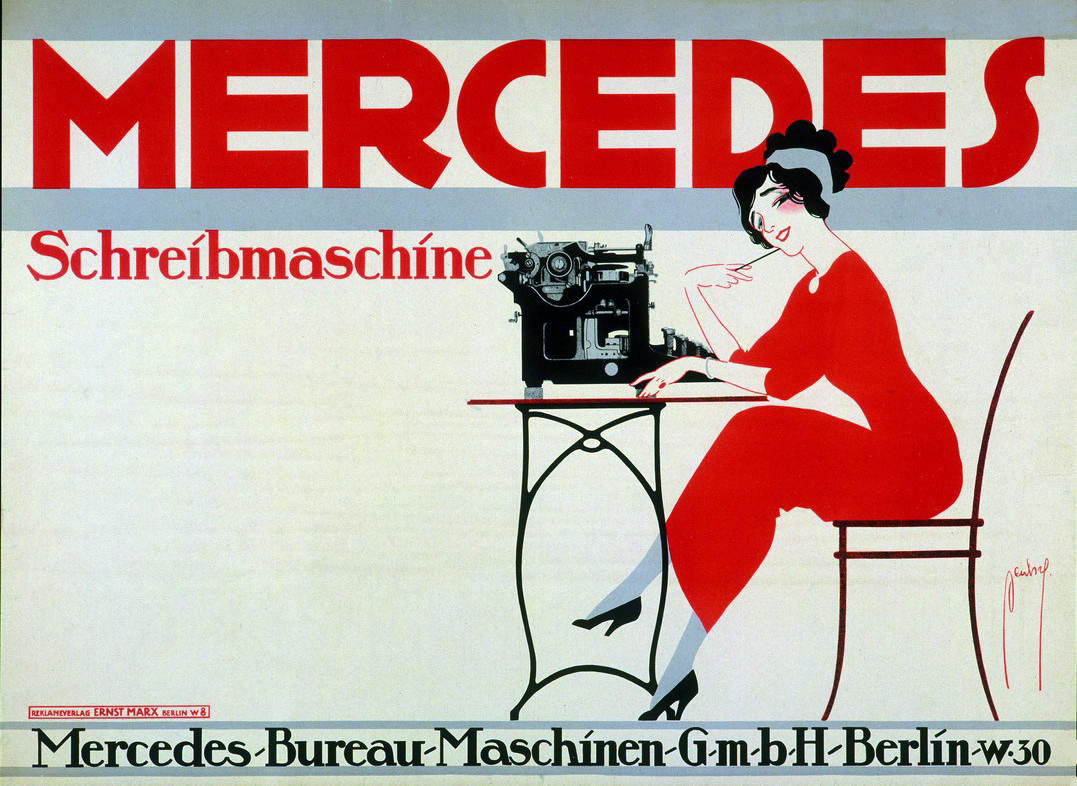
I also love the vintage typewriter on the cover for La Dac-Dac-Dactylo! illustrated by my favourite illustrator Roger de Valerio.
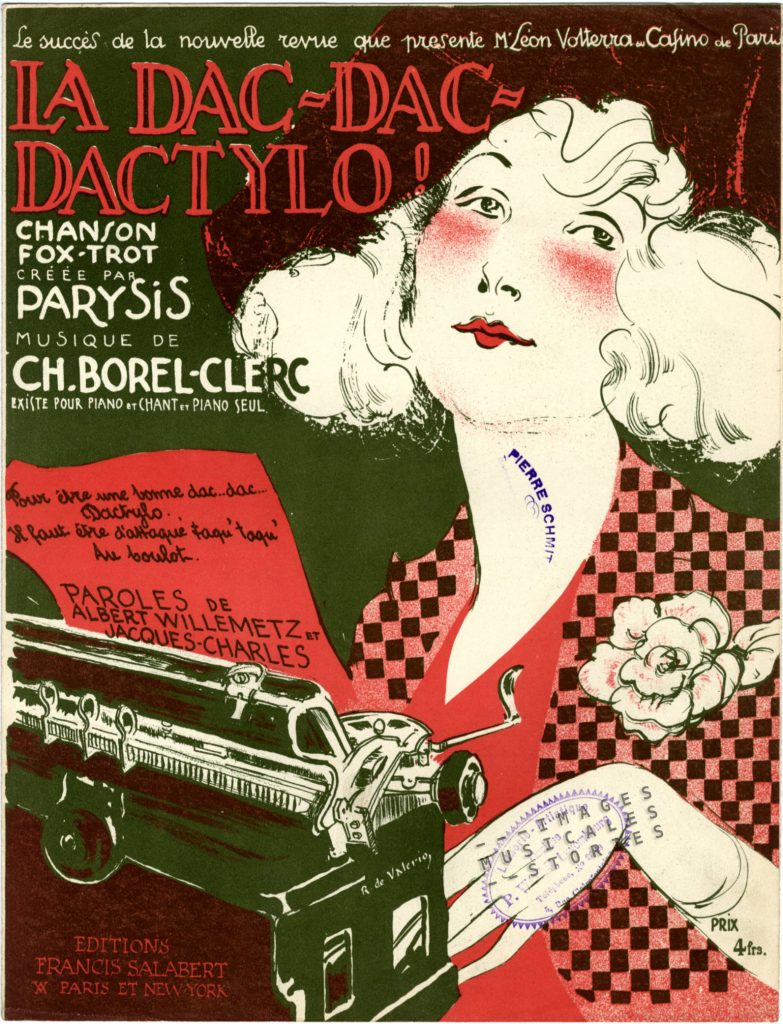
You can hear the fast pace of typing in this fragment of the frantic foxtrot.
Another typewriter song was published in the same year 1924: the Typewriting Machine Romance. Contrary to what you’d expect from the English title, it is a French composition: Chanson de la machine à écrire. It was written by Pierre Larrieu using his alias Harry W. Hampton. For its sheet music cover illustrator Choppy succeeds wonderfully well in translating the tappety-tap-tap of typing into music.
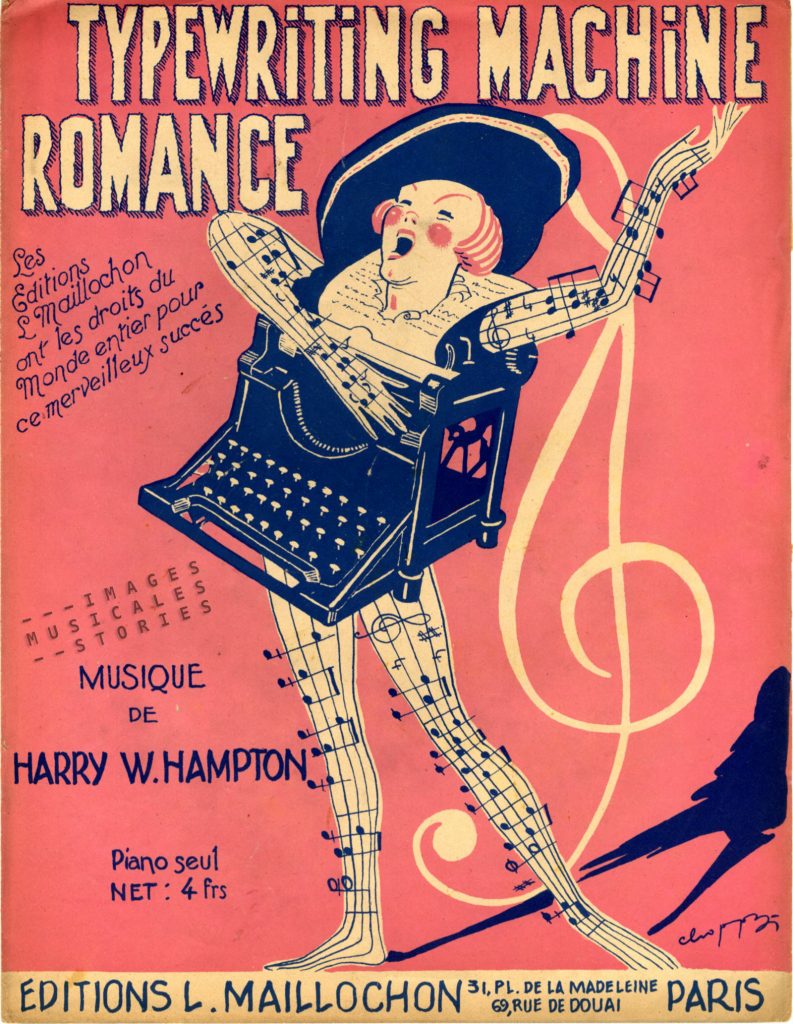
As early as 1917 Satie and Cocteau already recognised the musicality and rhythm of the typewriter. They used it as one of the sound effects in the avant-garde ballet Parade. Also watch out for the gun!
Modern women in the Twenties and Thirties worked as shop assistants or typists. Young beautiful girls could rise their social status by catching Mr. Right at the office. That’s what we learn from the German office film Die Privatsekretärin. This light-footed and successful comedy about the pitfalls of falling in love at work was made in 1931 as a Multi Language Version film (yes, like our previously told Seadrome film). The French-language version of Die Privatsekretärin was called Dactylo, which launched the slow-fox song Je vois la vie en rose.
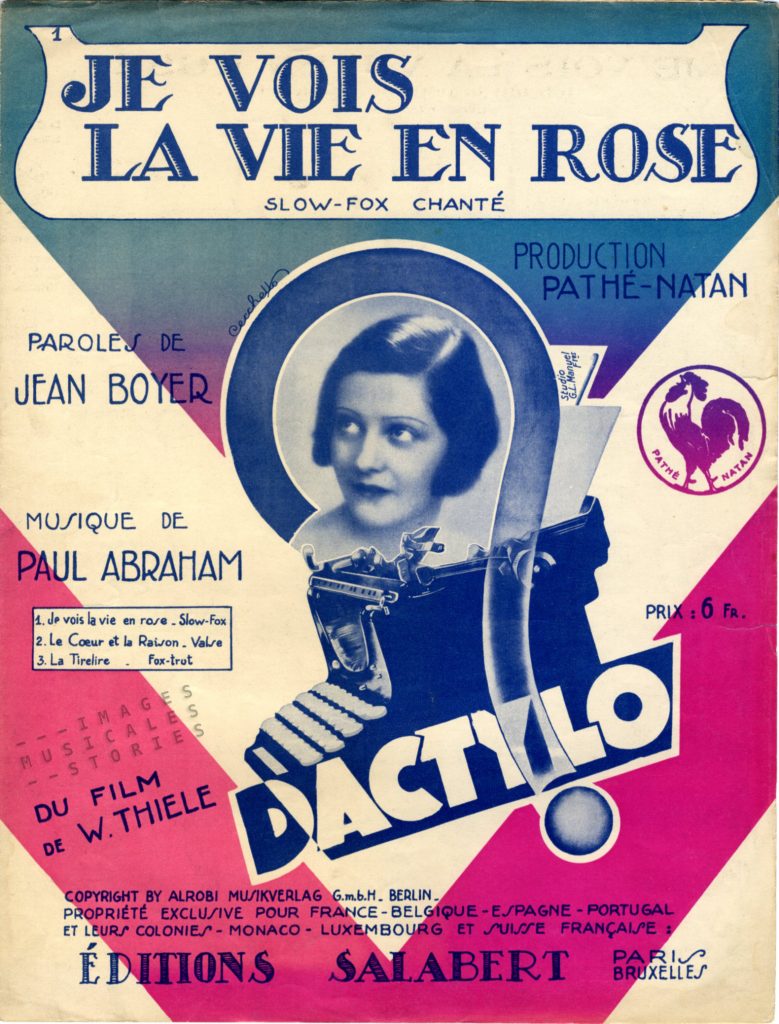
The English-language version, Sunshine Susie, starred the same leading actress as the original German version, Renate Müller (see note 2). The film was polled in England as the best British film of 1932. In the following fragment a song is created out of the hustle and bustle in the typewriting office.
Otto Dely drew the pretty blonde Blanka sitting elegantly at her typewriter. The five men behind her seem very interested in her WPM stats. I bet the lovely Blanka married her boss after she realised that her most important role is that of a mother and housewife.
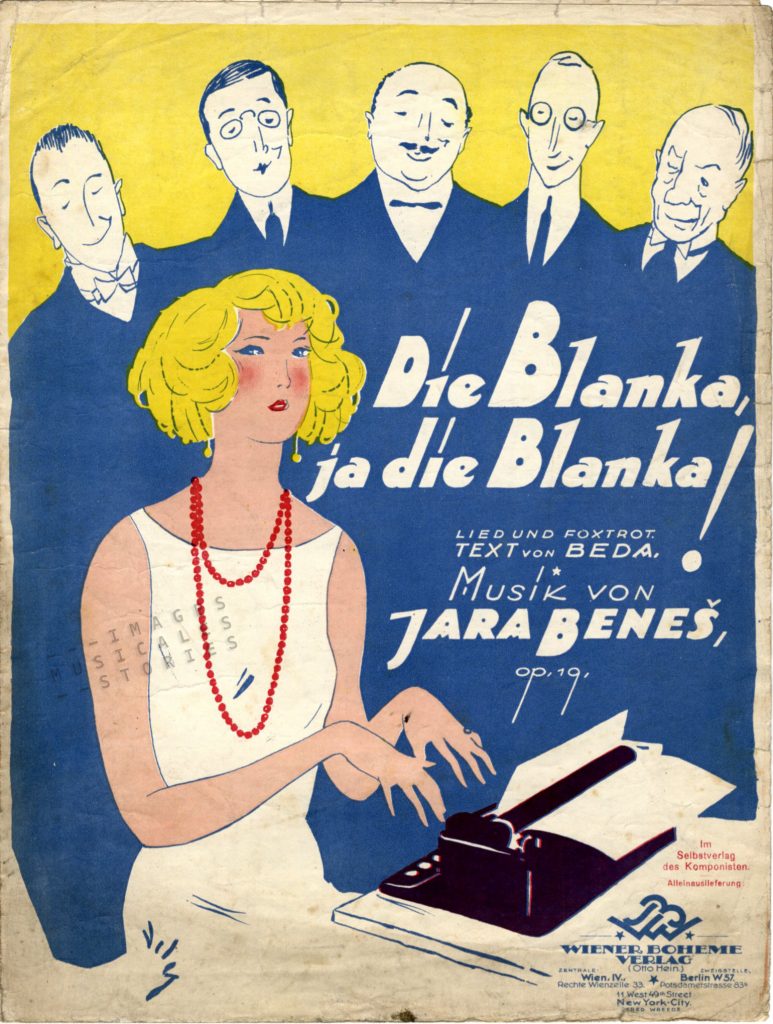
1937 saw Ruby Keeler and Lee Dixon perform a rather mediocre tap routine on a giant typewriter in the film Ready, Willing and Able. They are leaping from key to key. Watch the legs in black stockings kick the typewriter’s platen (the big rubber roller that you type on).
Notes:
- Die Privatsekretärin was one of Renate Müller’s greatest successes. She died tragically in 1937 after a fall from a window. But the circumstances surrounding her untimely death are unclear. Although it is said that she had a short relationship with Hitler, her entire property was confiscated by the Nazis. And Die Privatsekretärin was no longer shown in the cinema.
- The ‘Parade‘ fragment is available on YouTube as the first of two, and is played by the Orchestre Symphonique du Pays de Romans.
- Thanks Tom Hanks for the Hanx Writer app.

